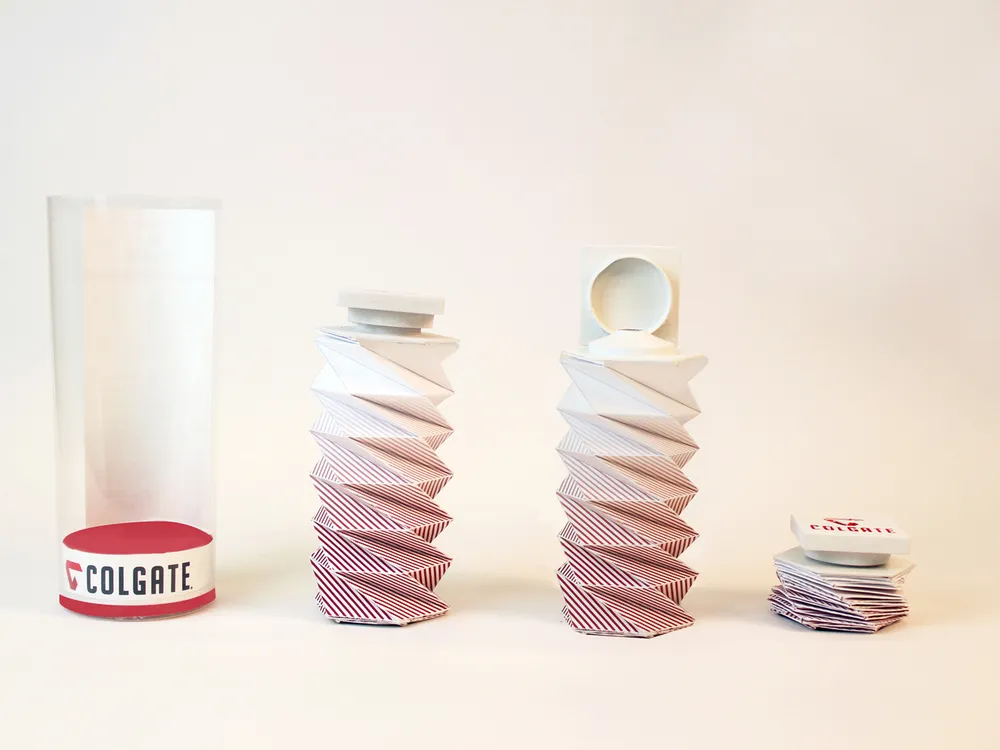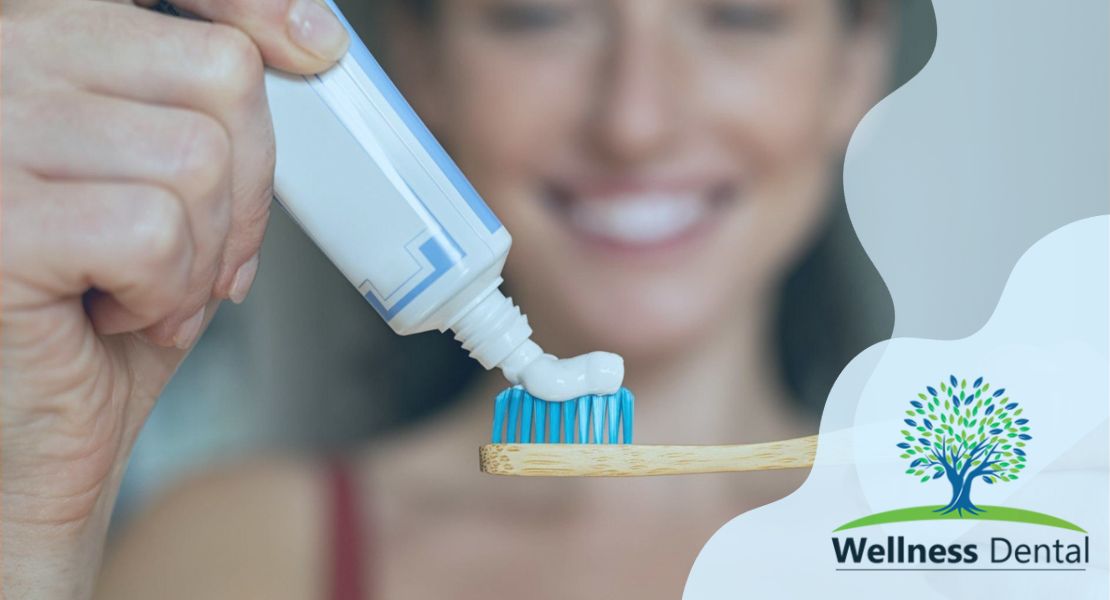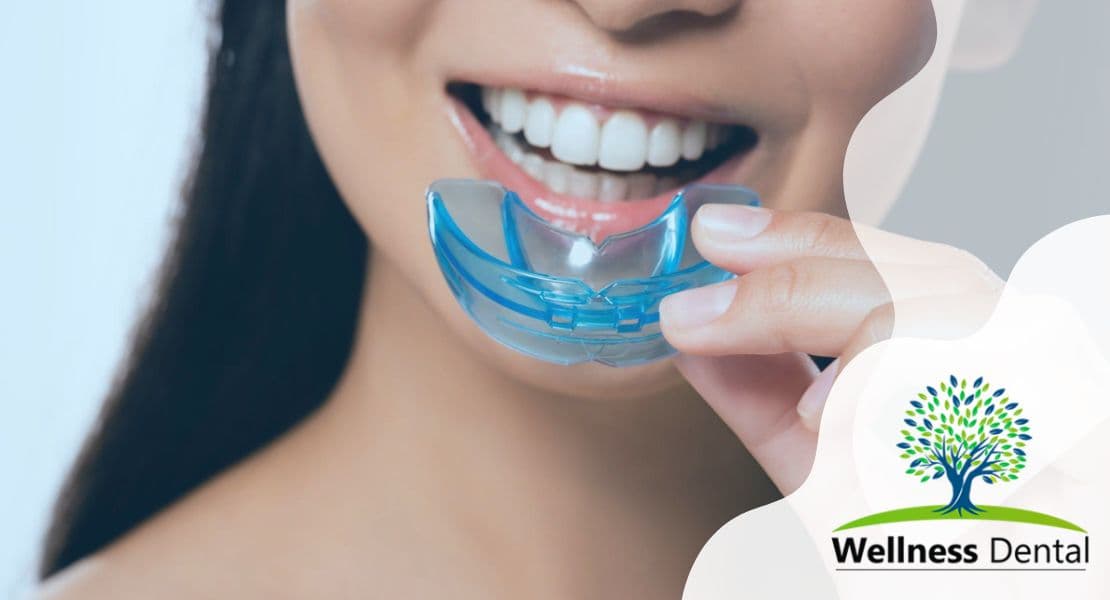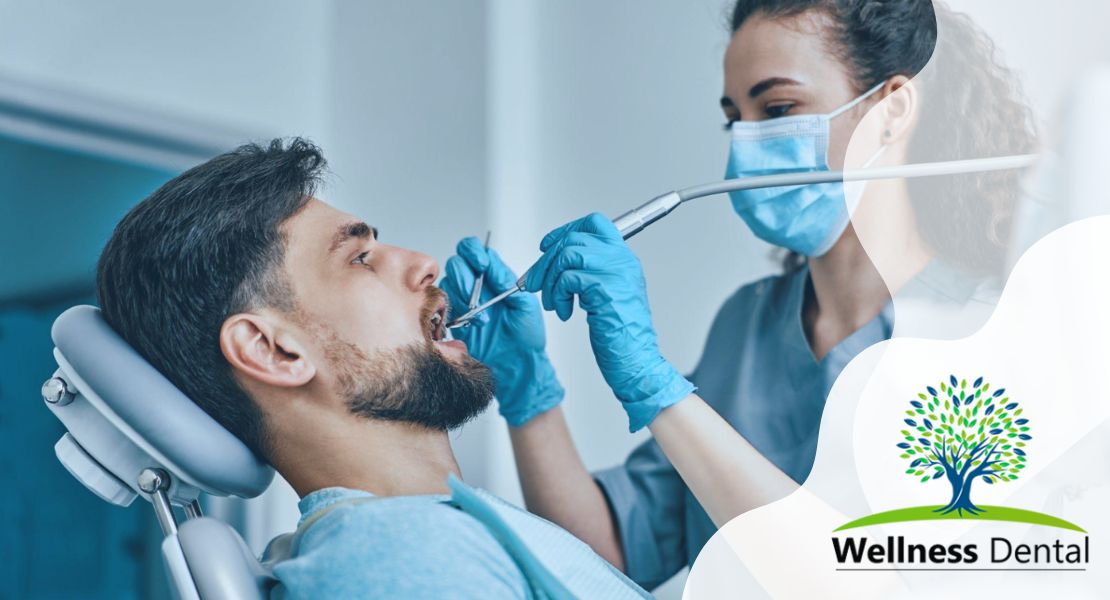Definition of Toothpaste
Toothpaste is a common oral hygiene product that we use on a daily basis to clean and care for our teeth. It is a gel or paste-like substance that is applied to a toothbrush and then used to brush our teeth. Toothpaste typically contains ingredients that help remove plaque, prevent tooth decay, freshen breath, and promote healthy gums.
It is an essential part of our dental care routine and plays a crucial role in maintaining optimal oral health. With a wide variety of options available, ranging from herbal toothpastes to those specially formulated for sensitive teeth, there is a toothpaste to meet the needs of every individual.
History of Toothpaste

Toothpaste, as we know it today, has come a long way since its inception. The history of toothpaste dates back to ancient civilizations, with the Egyptians being one of the first to develop a dental cleaning substance around 5000 BC. They used crushed bones, oyster shells, and powdered herbs like mints to create a primitive toothpaste.
Charcoal was also a common ingredient in ancient toothpastes, as it was believed to have cleansing properties and help combat bad breath. However, these early toothpastes were more of a tooth powder rather than a paste.
The invention of the modern toothpaste, known as Crème Dentifrice, came in the late 1850s. It was the first toothpaste that resembled the smooth paste we use today. This development made it easier to apply toothpaste to a toothbrush.
In 1873, Colgate introduced the mass production of toothpaste in glass jars, revolutionizing the dental hygiene industry. This made toothpaste more accessible to the general public.
The late 1800s saw another major breakthrough in toothpaste packaging with the invention of collapsible toothpaste tubes. This innovation allowed for easy dispensing and made toothpaste more portable and convenient to use.
Furthermore, the formula of toothpaste underwent changes over time. Soap, which was initially used in toothpaste, was later replaced by other ingredients like sodium lauryl sulfate. This transition led to gentler toothpaste options and a wider variety of flavors.
Today, toothpaste has evolved into an essential part of our daily oral health routine. With advancements in dental science, toothpaste comes in various formulations for different needs, including toothpaste for sensitive teeth, enamel protection, and preventing gum diseases.
The history of toothpaste showcases the continuous development and improvement of dental hygiene practices. From its humble beginnings in ancient civilizations to the modern-day toothpaste tubes we use, toothpaste has undoubtedly played a significant role in keeping our teeth clean and maintaining oral health.
Common Ingredients in Toothpaste
Toothpaste contains a variety of common ingredients that work together to effectively clean and protect our teeth. One of the most important ingredients is fluoride, which helps to strengthen tooth enamel and prevent tooth decay. It acts by remineralizing and repairing weak spots on the enamel, making it more resistant to acid attacks.

Another common ingredient found in toothpaste is sodium lauryl sulfate (SLS). SLS is a surfactant that creates the foaming and bubbling action in toothpaste. It helps to distribute the toothpaste evenly across the teeth and gums, improving its cleaning capacity.
Many toothpastes also contain abrasives such as calcium carbonate or silica. These abrasives aid in the removal of plaque and food particles, gently polishing the teeth to remove surface stains and promote a clean and smooth texture.
Other ingredients commonly found in toothpaste include humectants, such as glycerin or sorbitol, which help to retain moisture and prevent the toothpaste from drying out. Binders and thickeners, like carrageenan or cellulose gum, give toothpaste its texture and help to maintain its proper consistency.
Furthermore, toothpaste often includes flavorings, such as mint or fruit extracts, to provide a pleasant taste and freshen breath. Detergents, like sodium lauroyl sarcosinate, are also added to enhance the foaming and cleaning action of the toothpaste.
Types of Toothpastes

Toothpaste comes in a wide variety of types, each formulated to cater to specific oral health needs. One popular type is fluoride toothpaste, which contains fluoride to strengthen tooth enamel and protect against tooth decay. For those with sensitive teeth, there are toothpastes designed to alleviate tooth sensitivity by blocking the exposed dentin tubules.
Herbal toothpastes incorporate natural plant extracts, like neem or tea tree oil, known for their antibacterial properties. Some toothpastes focus on gum health, with ingredients like stannous fluoride to combat gum disease. Whitening toothpastes contain gentle abrasives that help remove surface stains for a brighter smile.
There are even specialized toothpastes for children, with lower levels of fluoride and fun flavors. With the wide range of toothpaste options available, it’s important to choose one that suits your specific oral health needs for a clean and healthy smile.
Oyster Shells
Oyster shells, an unexpected yet impactful ingredient in toothpaste formulations, have a long-standing history of use. These shells have been utilized for their unique properties, particularly their polishing abilities and calcium content.
Throughout history, oyster shells have been a common ingredient in toothpaste. Their natural polish gives toothpaste the ability to gently scrub away plaque and stains, leaving teeth looking clean and bright. Oyster shells also contain a substantial amount of calcium, which is essential for maintaining strong and healthy tooth enamel.
Ancient civilizations recognized the benefits of oyster shells and incorporated them into toothpaste formulas. Dating back to the 9th century, ancient toothpastes often consisted of ground charcoal, plant extracts, and powdered oyster shells. These mixtures were used to keep gums clean and teeth healthy.
Even with the advent of modern toothpastes, oyster shells still find their place. Although they may not be as common today, their historical significance in toothpaste cannot be overlooked. Oyster shells have helped shape and develop toothpaste as we know it today.
In conclusion, oyster shells have played a crucial role in toothpaste formulations throughout history. Their polishing properties and calcium content have made them a valuable toothpaste ingredient. From ancient civilizations to modern-day options, oyster shells have contributed to the development of toothpaste and continue to provide benefits for maintaining dental health.
Herbal Mints
Herbal mints have become a popular option in the world of natural toothpastes. With the rise of awareness towards natural and organic products, many people are opting for herbal toothpastes as an alternative to traditional options.
Herbal toothpastes are marketed as a natural and chemical-free option, appealing to those who prefer a more holistic approach to dental care. These types of toothpastes commonly include a variety of plant-based ingredients, such as baking soda, aloe, eucalyptus oil, myrrh, chamomile, calendula, neem, toothbrush tree, plant extracts (such as strawberry extract), and essential oils. These ingredients are chosen for their potential oral health benefits, such as soothing gums, reducing inflammation, and freshening breath.
One notable feature of herbal toothpastes is that they often do not contain fluoride or sodium lauryl sulfate. Fluoride is a common ingredient in regular toothpaste, known for its ability to strengthen tooth enamel and protect against tooth decay. However, some individuals may opt for fluoride-free herbal toothpastes due to personal preference or concerns about excessive fluoride intake.
Similarly, sodium lauryl sulfate is a foaming agent commonly found in many traditional toothpastes. Some people may choose to avoid toothpastes with this ingredient as it can potentially cause irritation or sensitivity in the mouth.
Overall, herbal mints offer consumers a natural and fluoride-free option for maintaining their oral health. With their wide variety of ingredients and potential benefits, herbal toothpastes have carved out a unique space in the toothpaste market, catering to those who prefer a more natural approach to dental care.
Modern Toothpastes
Modern toothpastes have come a long way since their ancient counterparts. With the development of advanced formulations, these toothpastes provide numerous benefits in protecting oral health and preventing dental problems.
The formulation of modern toothpastes is carefully crafted to address specific oral health issues. Ingredients such as fluoride are included to strengthen tooth enamel and make it more resistant to decay. This helps in reducing tooth decay and cavities, ensuring a healthier smile.
In addition to this, modern toothpastes are also designed to prevent gum diseases. They often contain anti-inflammatory agents that help in reducing gum inflammation and keeping the gums healthy. This is crucial in maintaining overall oral health.
One notable improvement in modern toothpastes is their taste. Gone are the days of unpleasant, medicinal flavors. Today, toothpastes come in a wide variety of appealing flavors, making brushing a more pleasant experience.
Another benefit of modern toothpastes is their breath-freshening properties. They are formulated with ingredients that help in eliminating bad breath, providing longer-lasting freshness and confidence throughout the day.
With advancements in the field of oral care, modern toothpastes have become highly effective in protecting oral health, reducing tooth decay, preventing gum disease, and providing a pleasant brushing experience. Incorporating these toothpastes into your daily dental routine can greatly contribute to maintaining a healthy and beautiful smile.
Rock Salt
Rock salt has been used as a toothpaste base throughout history, particularly in ancient civilizations such as Egypt and China. These ancient cultures understood the importance of oral health and utilized rock salt along with other ingredients to create toothpastes.
In ancient Egypt, for example, a mixture of rock salt, mint, dried iris flowers, and oyster shells was used as a toothpaste. The Egyptians believed that these ingredients would clean and whiten their teeth. Similarly, the Chinese mixed rock salt with various herbal mints, ginseng, and other natural substances to create their own toothpaste.
Apart from rock salt, other bases were also used in ancient toothpastes. These included chalk, charcoal, ashes, charred eggshells, pumice, ox hooves, and even clay brick dust. These ingredients were ground together to form a toothpaste-like substance.
However, it wasn’t until the 18th century that toothpaste as we know it today started to develop. During this time, advancements in chemistry and the understanding of oral health led to the creation of more effective toothpaste formulations. The use of rock salt and other natural bases started to fade as scientists and dentists began experimenting with different ingredients and refining toothpaste formulas.
Today, toothpaste has come a long way from its humble beginnings. With a wide variety of flavors and specializations, toothpaste continues to evolve to meet the needs of modern dental hygiene. Nevertheless, we can trace its roots back to ancient civilizations where rock salt and other natural ingredients were used to maintain oral health.
Collapsible Tube

A collapsible tube is a widely used packaging format for toothpaste and various other products. This type of tube is designed to conveniently dispense toothpaste while preserving its freshness and preventing any leakage.
The design of a collapsible tube is simple yet ingenious. It consists of a cylindrical body made of flexible material, typically aluminum or plastic. The tube is sealed at one end and has a small opening at the other, known as the nozzle. This nozzle is equipped with a screw cap or flip-top lid to keep the toothpaste secure when not in use.
To dispense toothpaste from a collapsible tube, gentle pressure is applied to the body, causing the flexible material to contract and squeeze the toothpaste out through the nozzle. This mechanism allows for easy control of the amount of toothpaste dispensed and minimizes any mess or wastage.
The collapsible tube’s construction is key in maintaining the toothpaste’s freshness. The tube is impermeable to light and air, which helps prevent the toothpaste from drying out, maintaining its texture and flavor over time. Additionally, the sealing cap or lid ensures that the toothpaste remains airtight, preserving its freshness and preventing any contamination.
There are several advantages to using a collapsible tube for toothpaste packaging. Firstly, the flexible material allows for easy squeezing, ensuring that every last bit of toothpaste can be effortlessly dispensed. Secondly, the compact nature of the tube makes it space-efficient, ideal for storage in bathrooms, travel kits, or handbags. Lastly, the design of the tube significantly reduces product waste, as it allows for precise control of the amount of toothpaste used, thereby promoting economic use.
In conclusion, the collapsible tube is a practical and effective packaging format for toothpaste. Its innovative design enables convenient toothpaste dispensing while preserving freshness and minimizing waste.
Sodium Lauryl Sulfate (SLS)
Sodium Lauryl Sulfate (SLS) is a common ingredient found in many toothpaste formulas. It serves as a foaming agent, creating the satisfying lather that we often associate with tooth brushing. This ingredient helps distribute the toothpaste evenly throughout the mouth, ensuring that all surfaces are cleaned.
However, the use of SLS in toothpaste has raised some concerns regarding its potential impact on oral health. Some studies suggest that SLS may cause irritation and sensitivity in certain individuals, particularly those with sensitive gums or teeth. It can strip the protective layer of enamel on our teeth, leading to increased tooth sensitivity and potential tooth decay.
Furthermore, the foaming action of SLS may temporarily alter taste perception, making it difficult to fully appreciate the flavors of food and beverages immediately after brushing. This effect is known as “taste disturbance.”
Despite these potential drawbacks, it is important to note that the concentrations of SLS used in toothpaste are generally considered safe for most individuals. It is advisable to consult with a dentist or dental professional to determine the best toothpaste option for your specific needs, especially if you have concerns about SLS or if you experience any oral health issues such as gum disease or sensitive teeth.
Tooth Powders
Tooth powders have a long history of use in oral hygiene, particularly in the 19th century in Britain. These powders were commonly made at home, using simple ingredients that were readily available.
In the 19th century, tooth powders were extremely popular due to their homemade nature. People would often make their own tooth powders using ingredients such as chalk, pulverized brick, salt, charcoal, eggshells, pumice, ash, and myrrh. These ingredients were chosen for their abrasive properties, which were believed to help clean the teeth and remove plaque.
However, tooth powders were not a new invention. They have been used in ancient civilizations, including Egypt, China, Greece, and Rome. In these ancient cultures, tooth powders were made from a variety of ingredients, including crushed bones, shells, and herbs. The abrasive nature of these powders was effective in cleaning the teeth, but they could also be quite harsh on the gums and enamel.
Over time, tooth powders fell out of favor as more modern toothpaste options became available. Today, tooth powders are less commonly used, but they still have a place in some oral care routines. Many natural and herbal tooth powders can be found in the market, catering to those who prefer a more traditional approach to oral hygiene.
In conclusion, tooth powders have a rich history and were widely used in the 19th century in Britain. Homemade tooth powders were made using ingredients such as chalk, charcoal, and salt. These powders were also used in ancient civilizations, highlighting their ancient roots. Although less commonly used today, tooth powders still have a niche market, particularly for those seeking natural oral care options.
Edible Toothpastes
Edible toothpastes have gained popularity in recent years as a unique and alternative approach to oral hygiene. Unlike regular toothpastes that are not meant to be swallowed, edible toothpastes are made from all-natural ingredients that are safe to consume. These toothpastes are designed to clean the teeth and gums while providing a refreshing taste.
One notable difference between edible toothpastes and regular toothpastes is the absence of fluoride and sodium lauryl sulfate. Fluoride is a common ingredient in regular toothpastes and helps to strengthen tooth enamel and prevent tooth decay. However, some individuals may prefer to avoid fluoride for personal reasons or due to health concerns. Similarly, sodium lauryl sulfate, a foaming agent found in many toothpastes, is not included in edible toothpastes as it can cause irritation for some people.
Edible toothpastes often contain a variety of natural ingredients that offer oral health benefits. Baking soda, known for its mild abrasive properties, can help remove surface stains and neutralize acidity in the mouth. Aloe vera gel soothes and moisturizes the gums, while essential oils such as peppermint, tea tree, and cinnamon provide a fresh taste and offer antimicrobial properties. Plant extracts like chamomile and green tea are commonly included for their anti-inflammatory and antioxidant benefits.
Using edible toothpastes for maintaining oral health has several advantages. They are a great option for those seeking a fluoride-free alternative or who have sensitivities to certain ingredients. Edible toothpastes also offer a pleasant taste and can be particularly appealing to children, encouraging better oral hygiene habits. However, it is important to note that without fluoride, there may be a higher risk of tooth decay in individuals who rely solely on edible toothpastes. Therefore, it is recommended to consult with a dentist to determine the best oral care routine based on individual needs and preferences.
Herbal Toothpastes
Herbal toothpastes have become increasingly popular among individuals seeking natural alternatives to regular toothpastes. These toothpastes often avoid artificial ingredients, such as fluoride and sodium lauryl sulfate, and instead utilize a wide variety of natural components to promote oral health.
One of the key benefits of herbal toothpastes is the use of ingredients like baking soda, known for its mild abrasive properties. Baking soda helps to remove surface stains and neutralize acidity in the mouth, leaving teeth feeling clean and refreshed.
Herbal toothpastes also frequently include aloe vera gel, which soothes and moisturizes the gums. Essential oils, such as peppermint, tea tree, and cinnamon, not only provide a fresh taste but also offer antimicrobial properties, tackling bacteria that can cause bad breath and gum disease. Additionally, plant extracts like chamomile and green tea are commonly included for their anti-inflammatory and antioxidant benefits.
It is important to note that while there is limited research on the efficacy of herbal toothpastes, many individuals report positive experiences using these products. However, it is recommended to consult with a dentist or dental professional to determine the best toothpaste for your specific dental needs.
It is also worth mentioning that the American Dental Association has highlighted the potential risks associated with the use of charcoal in toothpaste. While some studies suggest that charcoal may have whitening effects, there is insufficient evidence to support its overall safety and effectiveness in dental care.
In conclusion, herbal toothpastes offer natural alternatives to regular toothpastes, often avoiding artificial ingredients. While there is limited research on their efficacy, these toothpastes utilize a variety of natural ingredients that may provide oral health benefits. As always, it is advisable to consult with a dental professional to determine the best toothpaste option for you.
Benefits of Using Toothpaste
Toothpaste is an essential part of our daily oral hygiene routine, playing a crucial role in keeping our teeth and gums healthy. It offers a wide variety of benefits that go beyond just freshening our breath. One of the key benefits of toothpaste is its ability to remove plaque and prevent tooth decay. Toothpaste contains ingredients like fluoride, which strengthens tooth enamel and helps protect against cavities.
Additionally, toothpaste contains mild abrasives that help remove surface stains, keeping our teeth looking clean and bright. It also helps to freshen our breath by eliminating odor-causing bacteria. Furthermore, toothpaste can aid in reducing gum inflammation and preventing gum disease. With so many toothpaste options available, it is important to choose one that suits your specific dental needs and consult with a dentist or dental professional for personalized recommendations.
Oral Health Benefits
Toothpaste is a crucial tool in maintaining good oral health. Not only does it help to clean the teeth and freshen breath, but it also significantly reduces the risk of tooth decay and gum disease.
Regular brushing with toothpaste plays a vital role in cleaning the teeth. The abrasive properties of toothpaste help to remove plaque and food particles from the surface of the teeth, preventing the buildup of harmful bacteria. This, in turn, reduces the risk of cavities and tooth decay.
Toothpaste also aids in freshening breath. Many toothpastes contain ingredients like mint and other plant extracts that leave a refreshing taste and odor in the mouth. By getting rid of odor-causing bacteria, toothpaste helps to combat bad breath, giving you a fresh, clean feeling throughout the day.
For optimal oral health, it is important to choose the right toothpaste. Experts like Dr. Jeffrey D. Clark recommend using fluoride toothpaste with the ADA Seal of Acceptance. Fluoride is a mineral that strengthens tooth enamel and helps to combat tooth decay. The ADA Seal ensures that the toothpaste meets strict criteria for safety and effectiveness.
In conclusion, using toothpaste is crucial for maintaining clean teeth, fresh breath, and preventing tooth decay and gum disease. By choosing a fluoride toothpaste with the ADA Seal of Acceptance, you can ensure that you are taking the necessary steps to achieve optimal oral health.
FAQ
When did we start using toothpaste?
Toothpaste has been an essential part of oral hygiene for centuries, dating back to the 4th century. Initially, toothpaste was in the form of powdered charcoal and other natural ingredients. Over time, the evolution of toothpaste led to the use of mint extracts and other flavorings to improve taste. The transition from using soap to toothpaste also took place during this period.
How did people clean their teeth before toothpaste?
Before the invention of toothpaste, people used various methods to clean their teeth. In ancient times, tooth cleaning was done using natural materials such as twigs and leaves. Chewing on these abrasive substances helped remove food particles and plaque from the teeth. Additionally, powdered charcoal was used as a cleaning agent due to its absorbent properties.
When did humans start brushing their teeth?
Toothpaste has been an essential part of oral hygiene for centuries, dating back to the 4th century. Initially, toothpaste was in the form of powdered charcoal and other natural ingredients. Over time, the evolution of toothpaste led to the use of mint extracts and other flavorings to improve taste. The transition from using soap to toothpaste also took place during this period.






